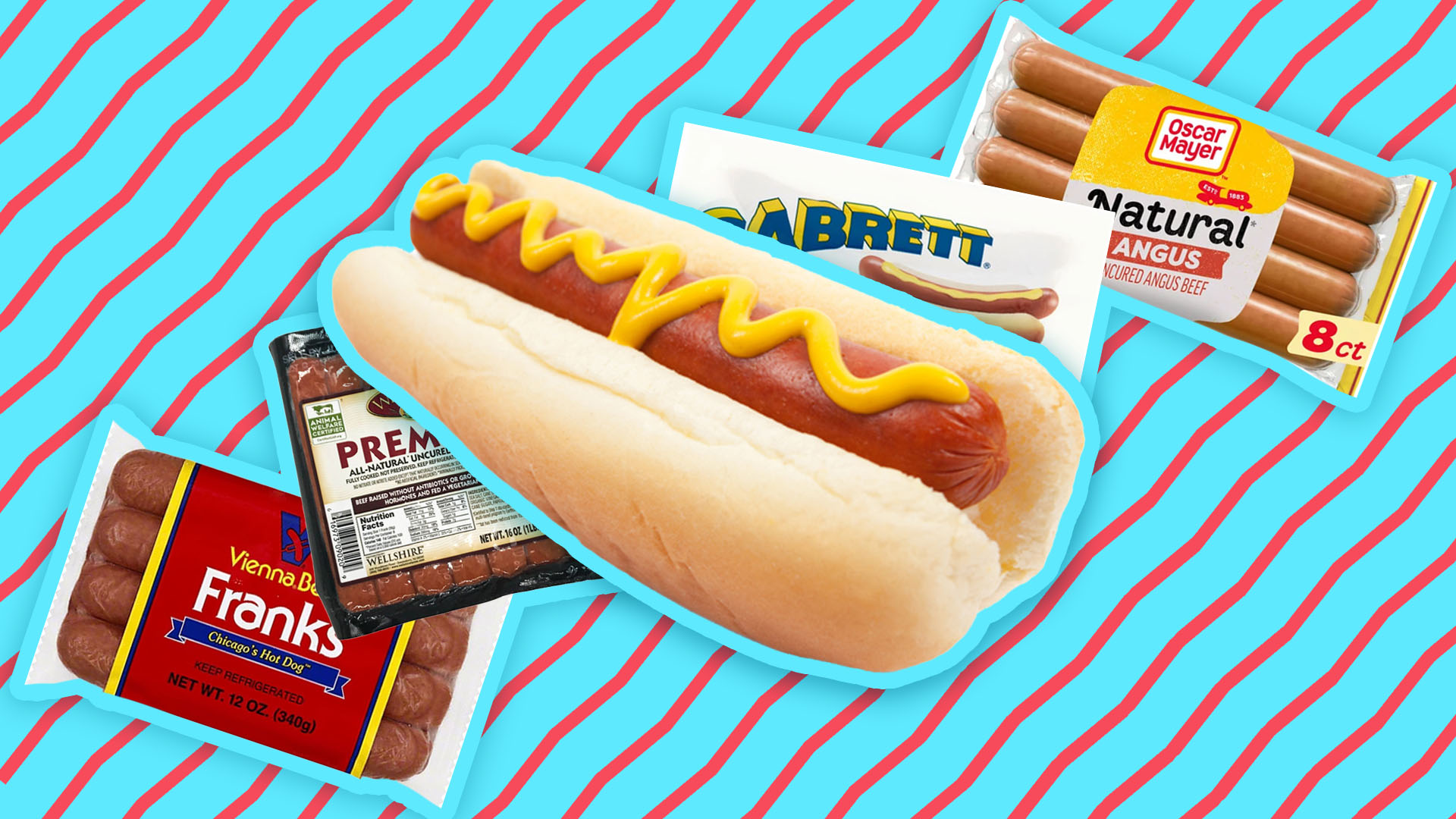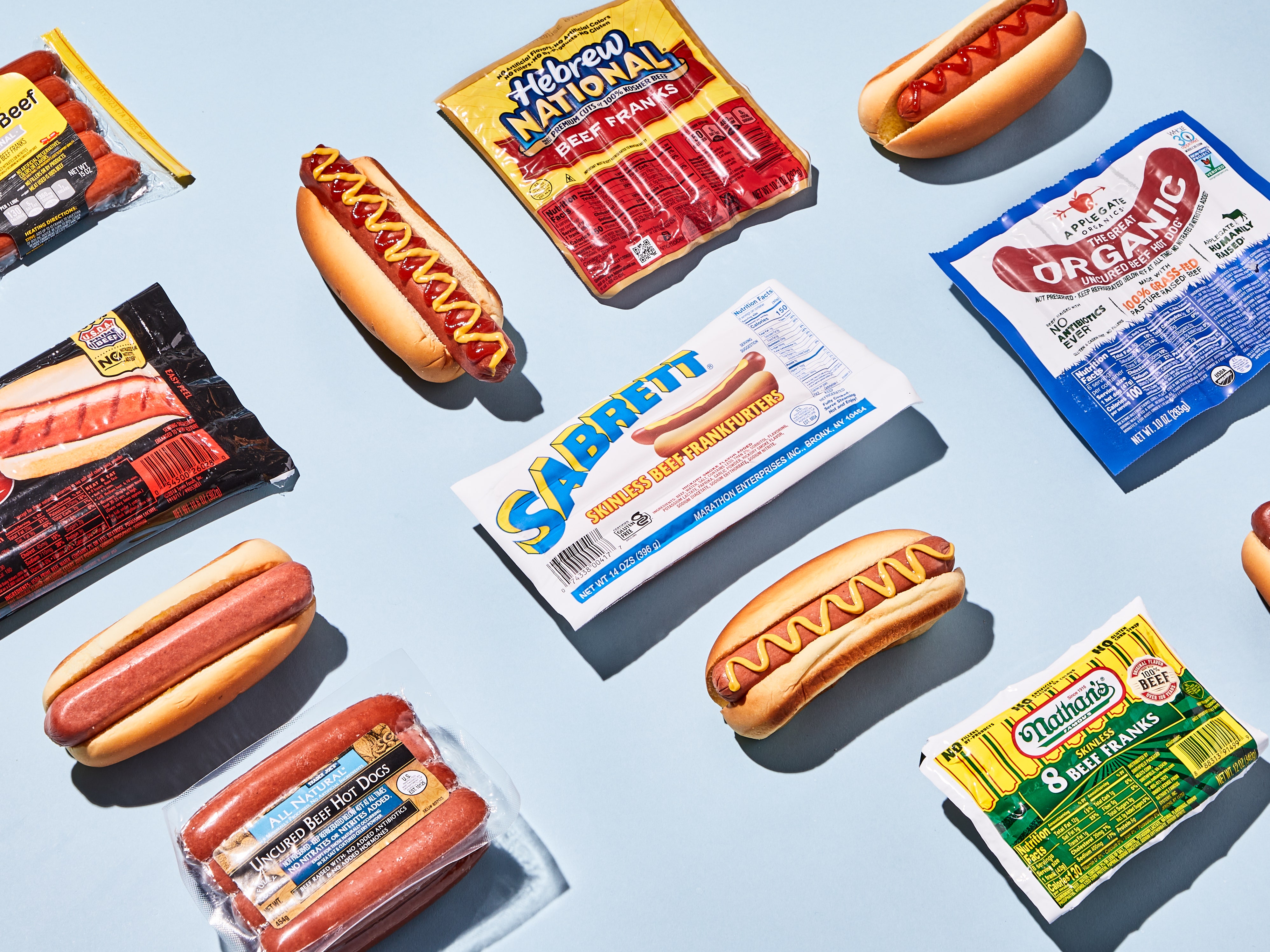Overview Of Hot Dogs And Uncured Hot Dogs

Hot dogs are a popular food choice, often enjoyed at barbecues, sporting events, and casual gatherings. They are typically made from a mixture of ground meat and seasonings, encased in a casing. Traditionally, hot dogs are cured using nitrites or nitrates to extend their shelf life and enhance their flavor. However, for those seeking a more natural option, uncured hot dogs are available. Uncured hot dogs are cured using natural ingredients that contain nitrates, providing a healthier alternative. This article will explore the differences between hot dogs and uncured hot dogs, including their ingredients, processing methods, nutritional profiles, and the best ways to enjoy them.
1 Differences Between Hot Dogs And Uncured Hot Dogs
The main difference between hot dogs and uncured hot dogs lies in the curing process and the ingredients used. Traditional hot dogs are cured using nitrites or nitrates, which act as preservatives and enhance flavor. In contrast, uncured hot dogs are cured using natural ingredients that contain nitrates, providing a healthier option. Some people prefer uncured hot dogs because they are made without artificial additives. When it comes to taste, uncured hot dogs may have a slightly different flavor profile due to the absence of artificial curing agents. Overall, the choice between hot dogs and uncured hot dogs depends on individual preferences and dietary needs.
2 Health Benefits Of Choosing Uncured Hot Dogs
Uncured hot dogs offer several health benefits compared to traditional hot dogs. Firstly, they are free from artificial additives such as nitrites and nitrates, which have been associated with adverse health effects. Secondly, uncured hot dogs are often made with higher quality ingredients, including grass-fed beef or organic meat, which can provide better nutritional value. Additionally, they are typically lower in sodium and saturated fat content, making them a healthier option for those watching their salt and fat intake. Opting for uncured hot dogs can contribute to a more balanced and nutritious diet.
Ingredients In Traditional Hot Dogs Vs. Uncured Hot Dogs

Traditional hot dogs typically contain a combination of mechanically separated meat, such as beef or pork, along with fillers, additives, and preservatives. These can include ingredients like sodium erythorbate, sodium nitrite, and various artificial flavors and colors. On the other hand, uncured hot dogs are made with higher quality ingredients. They often use organic or grass-fed meat and eliminate artificial additives like nitrites and nitrates. This results in a cleaner ingredient list and a more natural product overall. Choosing uncured hot dogs can provide a healthier and more wholesome option for consumers.
1 Comparison Of Ingredients Used
When comparing the ingredients used in traditional hot dogs and uncured hot dogs, there are notable differences. Traditional hot dogs often contain mechanically separated meat along with fillers, additives, and preservatives. These can include ingredients like sodium erythorbate and sodium nitrite. On the other hand, uncured hot dogs are made with higher quality ingredients. They often use organic or grass-fed meat and eliminate artificial additives like nitrites and nitrates. This results in a cleaner ingredient list and a more natural product overall. Choosing uncured hot dogs can provide a healthier and more wholesome option for consumers.
2 Impact Of Ingredients On Taste And Quality
The ingredients used in hot dogs have a significant impact on their taste and quality. Traditional hot dogs often contain mechanically separated meat, fillers, additives, and preservatives. These ingredients can contribute to a processed and artificial taste. On the other hand, uncured hot dogs are made with higher quality ingredients, such as organic or grass-fed meat. This results in a more natural and flavorful taste. By choosing uncured hot dogs, consumers can enjoy a higher quality product that offers a more authentic and satisfying eating experience.
Processing Methods Of Hot Dogs And Uncured Hot Dogs

Hot dogs and uncured hot dogs undergo different processing methods. Traditional hot dogs are typically made using a process called emulsification, where the meat and other ingredients are blended into a smooth paste. This paste is then stuffed into casings and cooked. On the other hand, uncured hot dogs may be made using methods such as grinding or chopping the meat, mixing in spices and seasonings, and then filling it into natural casings. The processing methods used for hot dogs and uncured hot dogs can affect the texture and flavor of the final product.
1 Various Processing Methods Explained
There are several processing methods used for both hot dogs and uncured hot dogs. Traditional hot dogs are typically made using a process called emulsification, where the meat and other ingredients are blended into a smooth paste. This paste is then stuffed into casings and cooked. Uncured hot dogs, on the other hand, may be made using methods such as grinding or chopping the meat, mixing in spices and seasonings, and then filling it into natural casings. These different processing methods can affect the texture and flavor of the final product.
2 How Processing Affects The Final Product
The processing methods used for hot dogs and uncured hot dogs can have a significant impact on the final product. Traditional hot dogs are typically made through emulsification, where the meat and other ingredients are blended into a smooth paste. This process creates a uniform texture and consistency.
On the other hand, uncured hot dogs may be made using methods such as grinding or chopping the meat and then mixing in spices and seasonings. This can result in a coarser texture compared to traditional hot dogs. Furthermore, the use of natural casings for uncured hot dogs can add a unique chewiness.
Overall, the processing methods used can affect the texture, flavor, and overall eating experience of both hot dogs and uncured hot dogs.
Nutrition Profile Of Traditional Hot Dogs And Uncured Hot Dogs

When comparing the nutrition profiles of traditional hot dogs and uncured hot dogs, there are some notable differences to consider. Traditional hot dogs often contain higher levels of sodium and fat, due to the curing process and the use of artificial additives. On the other hand, uncured hot dogs tend to have lower levels of sodium and fat, as they are typically made with natural ingredients and alternative preservation methods. However, it is important to note that both types of hot dogs can vary in nutritional content depending on the brand and specific ingredients used. Consumers should always check the product labels for accurate information.
1 Nutritional Differences Between The Two Types
Uncured hot dogs typically have lower levels of sodium and fat compared to traditional hot dogs. This is because uncured hot dogs are usually made with natural ingredients and alternative preservation methods, while traditional hot dogs often contain higher levels of sodium and fat due to the curing process and the use of artificial additives. However, it’s important to note that nutritional content can vary depending on the brand and specific ingredients used. Consumers should always check the product labels for accurate information on the nutritional profile of both traditional and uncured hot dogs.
2 Health Considerations And Dietary Preferences
When it comes to health considerations and dietary preferences, choosing between traditional hot dogs and uncured hot dogs can play a crucial role. Uncured hot dogs are often preferred by individuals looking for a healthier alternative, as they are typically made with natural ingredients and alternative preservation methods. This can be beneficial for those who are conscious about their sodium and fat intake. Additionally, individuals with dietary restrictions or preferences, such as those following a paleo or Whole30 diet, may opt for uncured hot dogs due to their cleaner ingredient list. It’s important to consider your specific health goals and dietary needs when making a choice between the two types of hot dogs.
Best Ways To Enjoy Uncured Hot Dogs

When it comes to enjoying uncured hot dogs, the possibilities are endless. Here are some great ways to savor this tasty treat:
- Grilled: Fire up the grill and cook your uncured hot dogs to perfection. The charred, smoky flavor pairs perfectly with the natural ingredients.
- Toppings Galore: Get creative with toppings! Add classics like mustard, ketchup, and relish, or try gourmet options like caramelized onions, sauerkraut, or avocado.
- Wraps and Rolls: Wrap your uncured hot dog in a soft bun or tortilla for a portable and delicious meal on the go.
- Salads and Slaws: Slice up your uncured hot dog and toss it in a fresh salad or slaw for an added protein boost.
- Fusion Flavors: Experiment with flavors from around the world. Add kimchi for a Korean-inspired twist or guacamole for a Mexican flair.
Remember, no matter how you enjoy your uncured hot dogs, always prioritize your dietary preferences and health goals.
1 Cooking Tips And Serving Suggestions
To fully enjoy uncured hot dogs, there are a few cooking tips and serving suggestions to keep in mind. Start by grilling the hot dogs to enhance their flavor and give them a crispy exterior. You can also pan-fry them in a little bit of oil for a similar effect. When it comes to serving, the options are endless. Load up your hot dog with traditional toppings like mustard, ketchup, and relish, or get creative with gourmet options like caramelized onions, sauerkraut, or avocado. Serve them in a soft bun or tortilla, or slice them up and toss them into a salad or slaw for an added protein boost. Whatever your preference, enjoy your uncured hot dogs in a way that best suits your taste buds.
2 Popular Recipes And Flavor Combinations
When it comes to enjoying uncured hot dogs, there are many popular recipes and flavor combinations to try. One classic favorite is the Chicago-style hot dog, topped with yellow mustard, chopped onions, sweet pickle relish, tomato slices, sport peppers, and a sprinkle of celery salt. Another delicious option is the bacon-wrapped hot dog, where the hot dog is wrapped in bacon and grilled to perfection. You can also get creative with flavor combinations, such as topping your hot dog with barbecue sauce, coleslaw, and crispy fried onions. The possibilities are endless when it comes to exploring different recipes and flavor combinations for uncured hot dogs.
Conclusion

In conclusion, exploring the differences between traditional hot dogs and uncured hot dogs provides insight into the options available for consumers. Uncured hot dogs offer a healthier alternative, as they are cured using natural ingredients without the addition of nitrites or nitrates. While the taste of cured and uncured hot dogs may be similar, the choice of preserving methods and ingredients can impact health and dietary preferences. By understanding the differences and considering individual needs, individuals can make an informed decision when selecting between traditional hot dogs and uncured hot dogs.
1 Recap Of Key Points
In summary, it is important to understand the differences between traditional hot dogs and uncured hot dogs. Uncured hot dogs are cured using natural ingredients without the addition of nitrites or nitrates, making them a healthier option. The choice of preserving methods and ingredients can impact both health and dietary preferences. While the taste may be similar, the health benefits of uncured hot dogs make them a desirable choice. By considering individual needs and understanding the nutritional profiles, individuals can make an informed decision when selecting between traditional hot dogs and uncured hot dogs.
2 Final Thoughts On Making A Choice Between Traditional Hot Dogs And Uncured Hot Dogs
When it comes to choosing between traditional hot dogs and uncured hot dogs, individuals should consider their health and dietary preferences. While traditional hot dogs may be a popular choice due to their familiar taste, uncured hot dogs offer a healthier alternative. By opting for uncured hot dogs, individuals can avoid the potential health risks associated with nitrites and nitrates. Additionally, the use of natural ingredients in uncured hot dogs can provide a more wholesome option. Ultimately, the decision between the two types of hot dogs should be based on individual needs and priorities.
FAQ About Uncured Hot Dogs: Exploring Differences From Traditional Hot Dogs
Q: What are uncured hot dogs?
A: Uncured hot dogs are hot dogs that do not contain added nitrites or nitrates, which are commonly used as preservatives in traditional hot dogs.
Q: How do uncured hot dogs differ from traditional hot dogs?
A: Uncured hot dogs are made without synthetic nitrites or nitrates, utilizing natural curing agents such as celery juice or sea salt instead. This gives them a different flavor profile and color compared to traditional hot dogs.
Q: Are uncured hot dogs healthier than traditional hot dogs?
A: Uncured hot dogs are often perceived as healthier options due to the absence of synthetic nitrites and nitrates. However, they may still contain comparable levels of sodium and fat, so it is essential to check the nutritional information.
Q: Do uncured hot dogs taste different from traditional hot dogs?
A: Yes, uncured hot dogs can have a slightly different taste due to the natural curing agents used in place of synthetic nitrites or nitrates. Some people prefer the flavor of uncured hot dogs for their more natural and sometimes milder taste.
Q: How should uncured hot dogs be cooked?
A: Uncured hot dogs can be cooked in the same way as traditional hot dogs – by grilling, pan-frying, boiling, or microwaving. Make sure to follow the cooking instructions provided on the packaging for the best results.
Q: Can uncured hot dogs be enjoyed by people with dietary restrictions?
A: Uncured hot dogs are often suitable for individuals with specific dietary restrictions or preferences, such as those looking to avoid synthetic additives or following certain diets like paleo or Whole30. Always check the ingredients list to ensure they align with personal dietary needs.

Johnny Knuckles Knock-out BBQ is a culinary haven for barbecue enthusiasts, offering a fusion of traditional BBQ and tantalizing street fare. Our secret to delivering mouthwatering dishes lies in our meticulous preparation process. Each cut of meat is lovingly hand-rubbed and slow-smoked over 100% hardwood, creating a symphony of flavors that will leave your taste buds dancing. Whether planning a special event or simply craving an unforgettable meal, Johnny Knuckles Knock-out BBQ is here to elevate your dining experience. Our catering services are designed to bring the sizzle and aroma of our delectable BBQ to your event, ensuring that every guest leaves with a full belly and a smile.